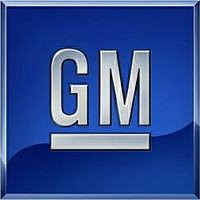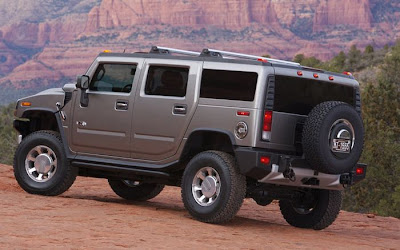GM Announces Truck Plant Closings, May Sell Hummer Brand
 We’ve previously discussed how Ford has accepted the new reality of a dramatically smaller market for large vehicles such as pickups and SUVs and subsequently announced substantial production cuts, as well as focusing more of its energies and development dollars on the creation of more efficient vehicles and powertrain technologies, such as the upcoming Fiesta subcompact and the EcoBoost twin turbocharger setup. Now today, on the occasion of its annual shareholder’s meeting and against similar headwind in the US market, GM has announced that it too has taken steps to further reduce its footprint in fuel-thirsty large trucks that are languishing unsold on dealer’s lots.
We’ve previously discussed how Ford has accepted the new reality of a dramatically smaller market for large vehicles such as pickups and SUVs and subsequently announced substantial production cuts, as well as focusing more of its energies and development dollars on the creation of more efficient vehicles and powertrain technologies, such as the upcoming Fiesta subcompact and the EcoBoost twin turbocharger setup. Now today, on the occasion of its annual shareholder’s meeting and against similar headwind in the US market, GM has announced that it too has taken steps to further reduce its footprint in fuel-thirsty large trucks that are languishing unsold on dealer’s lots.
First, the company plans to close four truck plants by 2010, and stated that it may move that schedule even earlier if market conditions deteriorate further. The plants to be closed are the Oshawa, Ontario truck plant in 2009 (builds the Silverado and Sierra pickups), the Moraine, Ohio SUV plant (builds the Trailblazer, Envoy, and Saab 9-7x), the Janesville, Wisconsin plant (builds the Suburban, Yukon, Tahoe, and medium-duty trucks) plant by the end of 2009 for medium-duty trucks and by 2010 for the SUVs, and a medium-duty truck plant in Toluca, Mexico later in 2008. Overall, approximately 2,500 employees are expected to lose their jobs, although many of them will be eligible to apply for transfers to replace some of the 19,000 staff who accepted buyout packages earlier this year and will need to be replaced.
Over the past few years, many analysts have wondered why GM bothered to continue to maintain the Hummer brand, since at this point, it’s very much the antithesis of the environmentally friendly, fuel-sipping face that nearly every vehicle manufacturer strives to present to the public and potential customers.
 Since the launch of the now-discontinued Hummer H1 (which itself is a civilian version of the military vehicle still used by the US military), each successive Hummer model has gotten better fuel economy, but with just two vehicles in the lineup (the H2 and H3), and neither of which is rated at even 20 miles per gallon on the highway, the brand has a huge image problem. That problem was rumored to be in line for a fix if Hummer ever launched the rumored Jeep Wrangler-size H4 (which was shown in Detroit in January 2008 as the HX concept), but the fact is that buyers are avoiding the Hummer showroom in droves. Therefore, GM has announced that it will undertake a strategic review of the Hummer brand. That’s nearly the identical code-speak that Ford said when it put Aston Martin, Jaguar, and Land Rover on the block, and what DaimlerChrysler said when it put Chrysler up for sale. I see the H4 as the Hummer brand’s last hope for survival, but if GM decides that it can’t afford to develop and launch it, the Hummer brand is going to be shown the door. I don’t really see any entity being terribly excited about the prospect of owning the Hummer brand, either, so I’d imagine that a sale is unlikely, meaning that it would just close up shop.
Since the launch of the now-discontinued Hummer H1 (which itself is a civilian version of the military vehicle still used by the US military), each successive Hummer model has gotten better fuel economy, but with just two vehicles in the lineup (the H2 and H3), and neither of which is rated at even 20 miles per gallon on the highway, the brand has a huge image problem. That problem was rumored to be in line for a fix if Hummer ever launched the rumored Jeep Wrangler-size H4 (which was shown in Detroit in January 2008 as the HX concept), but the fact is that buyers are avoiding the Hummer showroom in droves. Therefore, GM has announced that it will undertake a strategic review of the Hummer brand. That’s nearly the identical code-speak that Ford said when it put Aston Martin, Jaguar, and Land Rover on the block, and what DaimlerChrysler said when it put Chrysler up for sale. I see the H4 as the Hummer brand’s last hope for survival, but if GM decides that it can’t afford to develop and launch it, the Hummer brand is going to be shown the door. I don’t really see any entity being terribly excited about the prospect of owning the Hummer brand, either, so I’d imagine that a sale is unlikely, meaning that it would just close up shop.
Some brighter news for GM is that the much-ballyhooed Chevrolet Volt plug-in hybrid vehicle has been added to the production plan for a late 2010 launch, and will likely be built in Michigan (the leaked UAW document last year pointed to the Detroit-Hamtramck Assembly Center, which currently builds the Buick Lucerne and Cadillac DTS, as the plant that will build the Volt). CEO Rick Wagoner also said that GM expects to show the production-trim version of the Volt (likely to look very different from the concept) in the “very near future.”
In other much-needed small car news for GM, the next generation of the semi-successful (if not critically acclaimed) Chevrolet Aveo subcompact will come in the second half of 2010. Finally, the replacement for the Chevrolet Cobalt compact (with mercifully no mention of its badge-engineered clone, the Pontiac G5) will come in mid-2010 and will be built in the same plant it’s assembled in currently (Lordstown, Ohio), equipped with a new 1.4 liter turbocharged four cylinder, and in a car that (according to GM) will set class benchmarks for safety and quality. I’ll note that there is no mention of benchmarks for fuel economy, performance, or design – but hopefully the new 1.4 liter turbo will help with both fuel economy and performance.
This is just another part of an ongoing series of wrentching changes in process in the US domestic auto industry. Two years ago, I was fairly confident in GM’s ability to stave off bankruptcy and excel in the marketplace with their excellent new products. At this point, however, I’m not sure that even the best products in the world will change the game sufficiently for GM to survive in anywhere near its current form. It seems like this might be a case of too little, too late. I hope, for the sake of the industry and GM employees, that I’m wrong.




